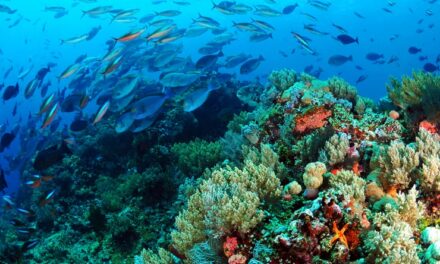Virginia Chipurnoi—affectionately called “Mrs. C” by colleagues and volunteers—is president of the Humane Society of New York (HSNY), a Charity Navigator 4-star nonprofit whose full-service animal hospital treats nearly 40,000 companion animals each year. A veteran advocate who testifies in Albany and Washington for stronger animal- and habitat-protection laws, Chipurnoi has spent decades designing humane-education programs and leading global initiatives that safeguard wildlife and their environments. Her deep, science-driven commitment to conservation informs the practical ocean-protection steps outlined below.
The ocean is the Earth’s largest ecosystem, supplying us with more than 50% of the oxygen we breathe and supporting up to 80% of life on the planet. When we appreciate what this incredible water system provides, it’s easy to understand it must be
protected.
Fortunately, there are many steps that concerned individuals can take. Let’s explore six ways that each of us can get involved in saving the ocean.
Reduce the use of plastics.
The utility of plastic can be seen in how many items we use on a daily basis. From single-use straws to take out cartons to grocery packaging and disposable water bottles, plastic is pervasive in our lives.
The downside is that humanity’s strong reliance on this substance has significantly harmed the oceans. An astounding 33 billion pounds of plastic is emptied into the oceans annually, endangering marine animals and seabirds when it’s ingested or caught on their bodies.
The good news is that there are more and more products that are offered plastic-free. Take note of where you currently use plastic and make a point of finding alternatives like refillable drinking containers, reusable shopping bags, and paper straws. Plus, make sure to recycle any plastic you use at home.
Conserve water.
Any water we use makes its way to the ocean over time. Contaminated water can have a devastating effect on ocean species and create algal blooms that are dangerous for both humans and animals.
Wastewater treatment systems have a significant role in ensuring that pollutants are diverted from nearby bodies of water. That said, these plants can become overwhelmed with excessive water usage and runoff. Furthermore, the United Nations estimates that some 80% of wastewater across the world is untreated before it re-enters the ocean.
When it comes to conserving water in the United States, approximately 900 billion gallons is wasted by households every year. This amount can be reduced if each US resident takes actions like taking shorter showers, turning off the water during teeth brushing, doing less laundry, collecting rainwater for gardening, and making similar moves.
Join a cleanup crew.
Regardless of where you live, you’re apt to see trash that people have left behind in the environment. While this can be discouraging, joining other like-minded individuals to clean up a stretch of beach in your community is a great way to make a difference.
Chances are, there will be a local cleanup event advertised where you can participate. For instance, the third Saturday in September is designated as International Coastal Cleanup Day when countries around the world organize people to collect trash on ocean beaches. This is where you can learn more about the impact of garbage and pollution on marine life and ocean health. And, you can always put together a smaller project with your friends and neighbors at other times of the year.
Be a responsible tourist.
When you take a vacation or travel for work, remember that you’re contributing to environmental pollution by using fossil fuel. Whether you’re taking an airplane or driving, the extra CO2 expended adds up. One example is that 8% of global emissions each year can be attributed to travel by tourists.
It goes without saying that when you’re away from home, you should take care not to contribute to pollution and make decisions that are responsible and sustainable. This means not leaving trash behind when you go to the beach, following the rules for visiting marine ecosystems, respecting the habitats of wild animals and supporting local eco-tourism outfitters with your tourist dollars.
Shop with awareness.
You can do a lot to protect the ocean with your purchasing power. Before you part with your cash, research merchandise that isn’t harmful to the environment.
Certain beauty products are made with microbeads that end up in the bodies of fish and marine mammals, while some sunscreens contain chemicals that bleach coral reefs. Buying choices also extend to selecting appliances that are energy-efficient, using green energy where possible, and not purchasing souvenirs and jewelry made from coral or the shells of sea turtles.
Consume only sustainable seafood.
Are you a fan of seafood? Your decisions about what type of fish and seafood to eat can also protect our oceans. In particular parts of the planet, overfishing puts considerable pressure on our expansive water bodies. This irresponsible behavior pollutes the oceans and destroys the habitats of marine life.
When you’re picking out a seafood dish from a restaurant menu or picking up seafood to cook at home, look for information to confirm sustainable seafood practices were used. If the catch is from a wild fishery that’s well-managed, you can be rest assured you’re doing your part to protect ocean life.
In Closing
There are some very effective ways that each person can protect the health of our oceans. Reducing plastics, conserving water, beach clean ups, responsible travel, shopping with awareness and eating sustainable seafood are simple steps anyone can take.




